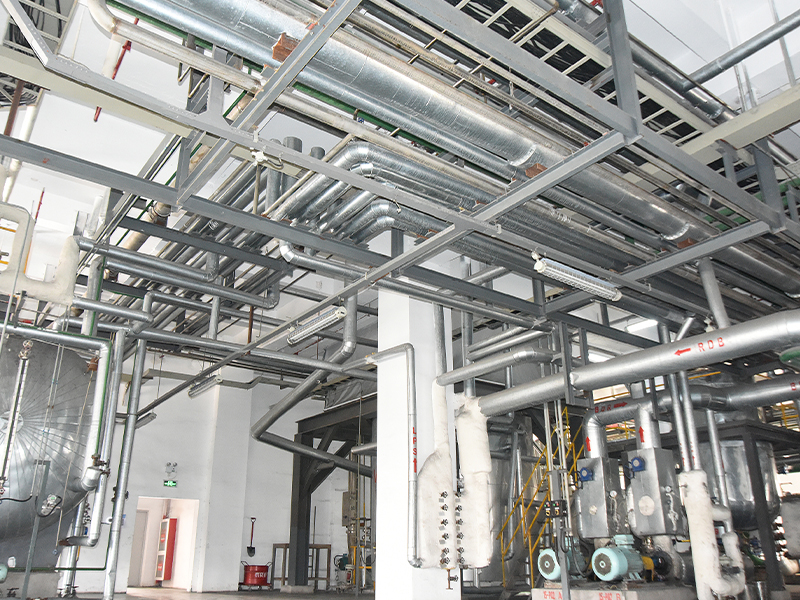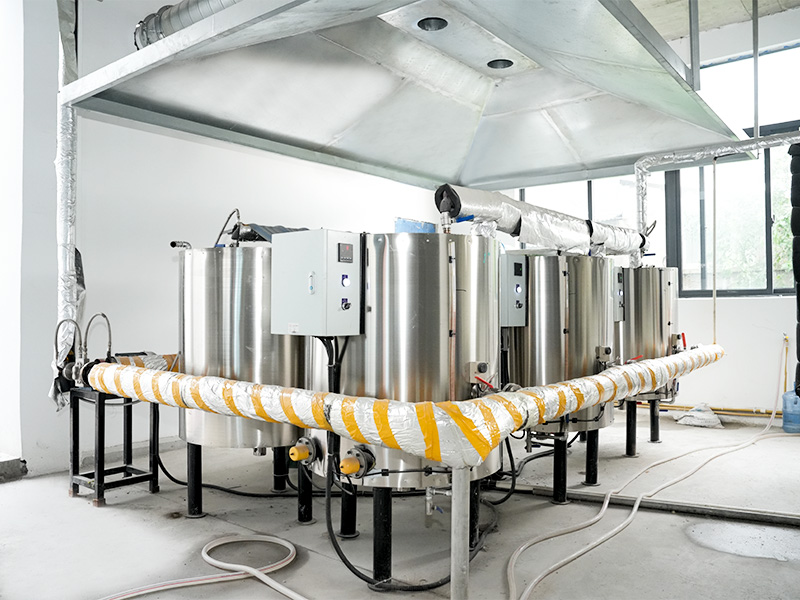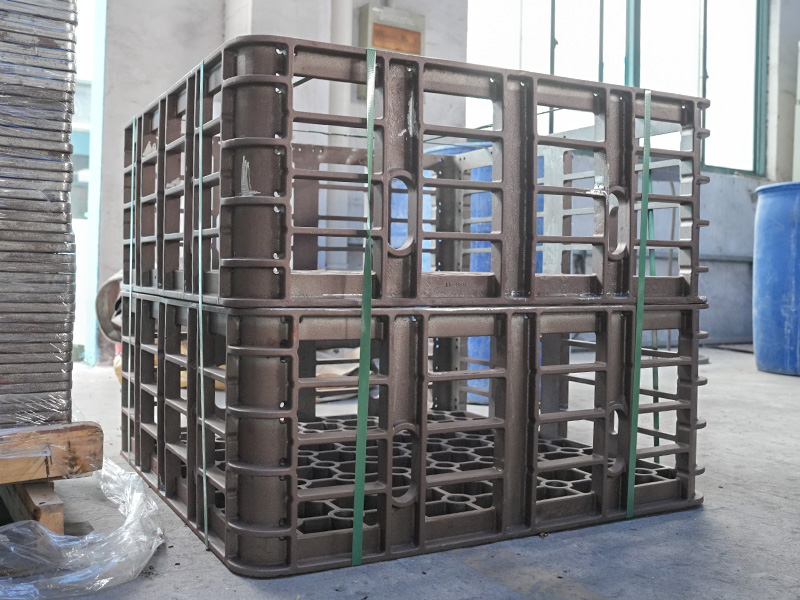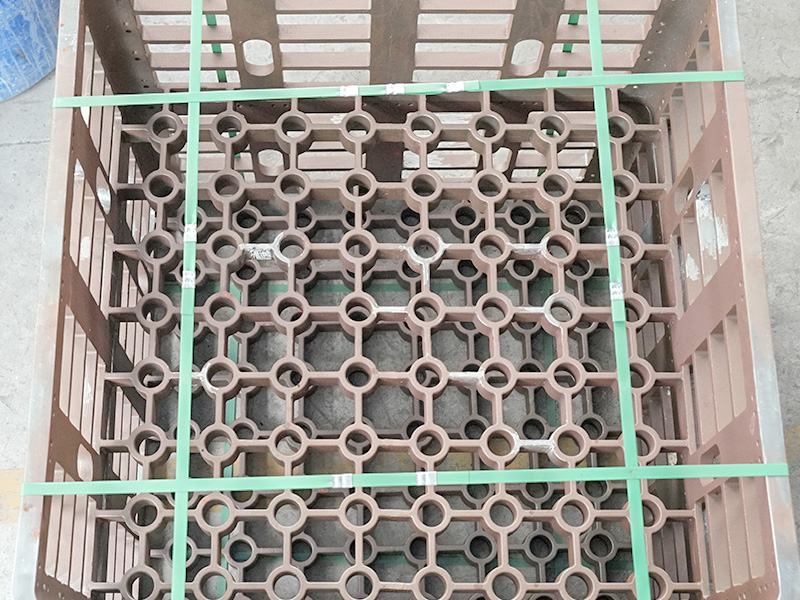In high-end manufacturing, vacuum heat treatment technology is widely used in aerospace, medical equipment and precision tools due to its characteristics of no oxidation, low deformation and precise temperature control. However, an often overlooked link in this process - the degassing effect (Outgassing) of the heat treatment tray - may become an "invisible killer" of workpiece quality.
1. Mechanism and source of degassing effect
In a vacuum environment, gas molecules (such as H₂O, O₂, CO₂, etc.) adsorbed on the surface of the heat treatment tray and the workpiece, as well as gases dissolved in the material (such as H₂, N₂) will be rapidly released due to high temperature and low pressure conditions. This process is called "degassing". In particular, when the density of the tray material (such as graphite, stainless steel or ceramic) is insufficient or the pretreatment is insufficient, the volatile substances (such as sulfur and phosphorus compounds) remaining in its pores will further aggravate the degassing effect. For example, when the graphite tray is above 600°C, the release rate of sulfur may reach 10⁻⁴ Pa·m³/s, significantly polluting the vacuum environment.
2. Negative impact of degassing effect on workpiece quality
Surface contamination and oxidation
The gas molecules released by degassing will react with the surface of the workpiece. For example, when the oxygen partial pressure exceeds 10⁻⁵ Pa, a brittle oxide layer (TiO₂) will form on the surface of the titanium alloy, resulting in a decrease in fatigue life of more than 30%; water vapor may cause "hydrogen embrittlement" of high carbon steel, causing microcracks.
Uneven heat transfer
Gas residue will reduce the uniformity of the vacuum environment, resulting in a decrease in the thermal radiation efficiency between the tray and the workpiece. Experimental data show that when the vacuum degree drops from 10⁻³ Pa to 10⁻¹ Pa, the heating rate deviation of the aluminum alloy workpiece can reach 15%, causing local overheating or underburning.
Deterioration of material properties
During the degassing process, key elements of some alloys (such as magnesium and zinc) may be lost due to gasification. Taking aviation aluminum alloy 7075 as an example, for every 0.1% increase in the loss rate of magnesium, its tensile strength will decrease by about 50 MPa.
3. Optimization strategy: collaborative improvement from materials to processes
Pallet material upgrade
Choosing low outgassing rate materials, such as chemical vapor deposition (CVD) silicon carbide coated graphite, can reduce sulfur release to 10⁻⁷ Pa·m³/s. Ceramic-based composites (such as Al₂O₃-SiC) have both low outgassing and high thermal conductivity.
Pretreatment process innovation
Pre-baking the tray (800℃, 10 hours of vacuum annealing) can remove more than 90% of the adsorbed gas. NASA research shows that the gas release of pretreated stainless steel trays in a vacuum furnace is reduced by 76%.
Dynamic vacuum control technology
During the heating stage, a molecular pump and a cryogenic pump are used to stabilize the vacuum degree below 10⁻⁴ Pa; during the cooling stage, high-purity argon gas (purity 99.999%) is introduced to effectively inhibit secondary oxidation.
News
Home / News / Industry News / How does the degassing effect of the Heat Treatment Tray under vacuum affect the quality of the workpiece?
Industry News
Mar 07, 2025 POST BY ADMIN
How does the degassing effect of the Heat Treatment Tray under vacuum affect the quality of the workpiece?
Message Feedback
News & EVENT
Product Categories
Recent Posts
contact us
Contact Information
-
Tel: +86-0523-83458888
-
Phone: +86-13605269351
-
Fax: +86-0523-83458508
-
Email: jinniuzz@163.com
-
Add: Shunda Road, Lincheng Town Science and Technology Industrial Park, Xinghua City, Jiangsu Province
Get In Touch
You can contact me using this form.
Copyright © Xinghua Jinniu Machinery Manufacturing Co., Ltd. All Rights Reserved.
China High-performance Casting Components Manufacturers
BACK TOP
 English
English русский
русский Español
Español عربى
عربى




